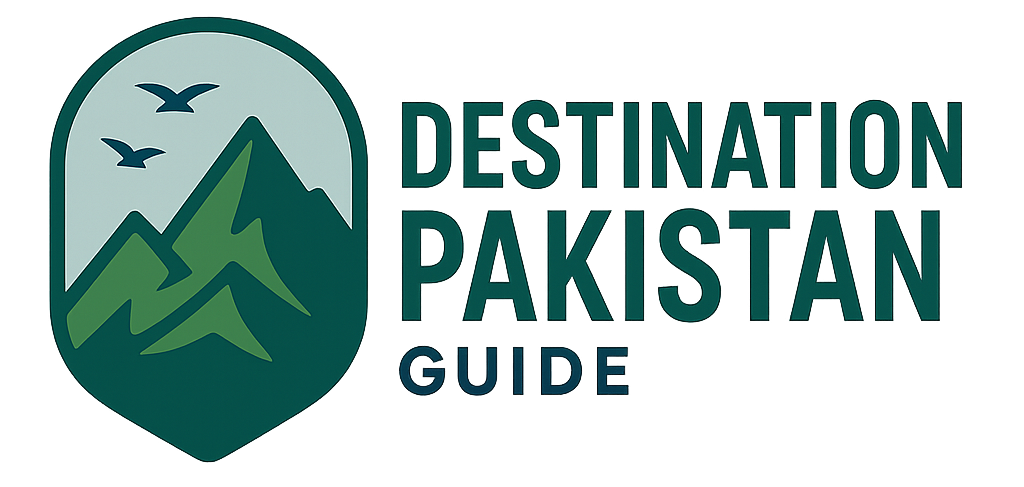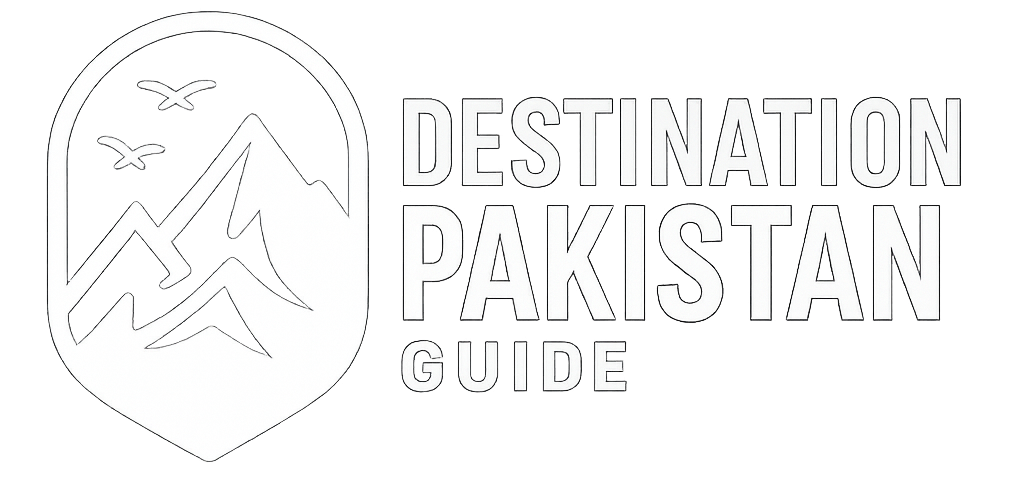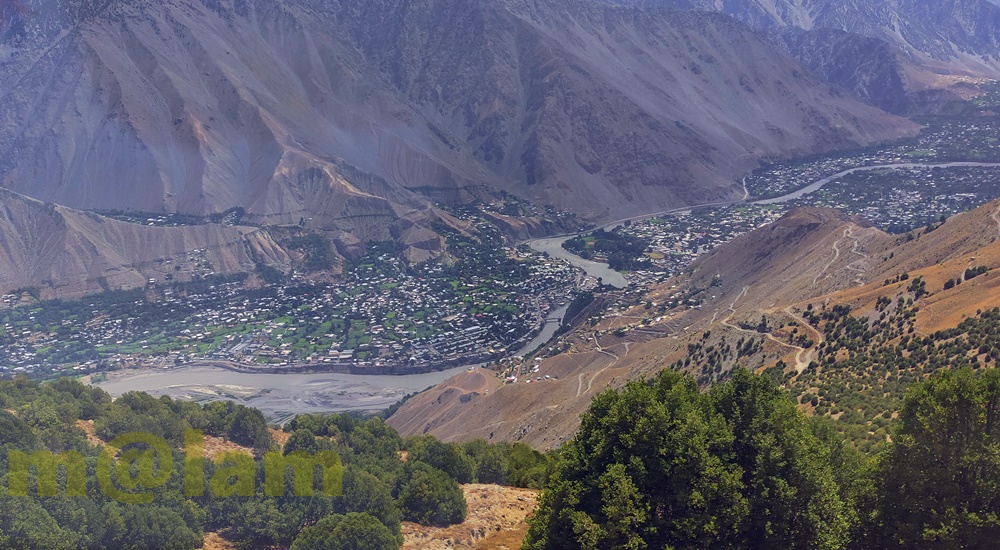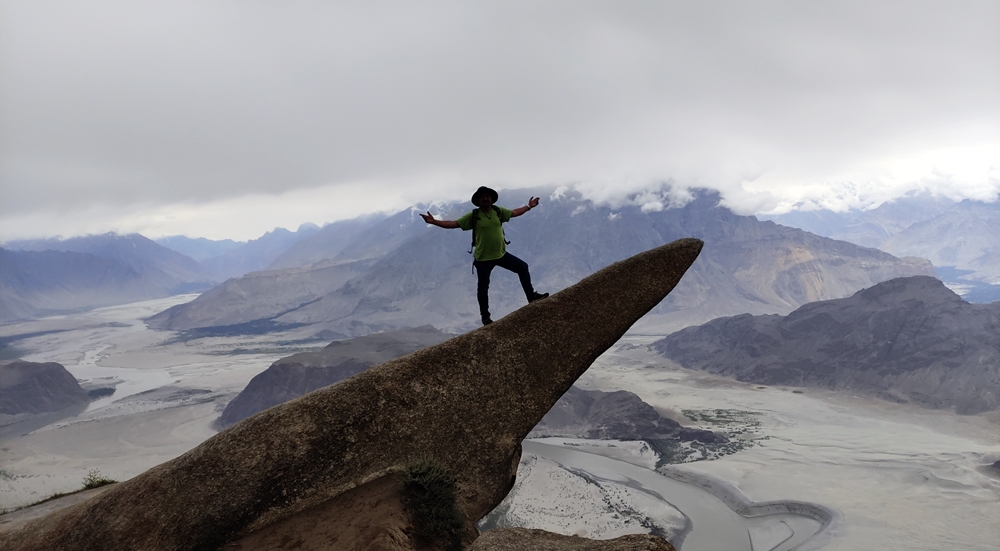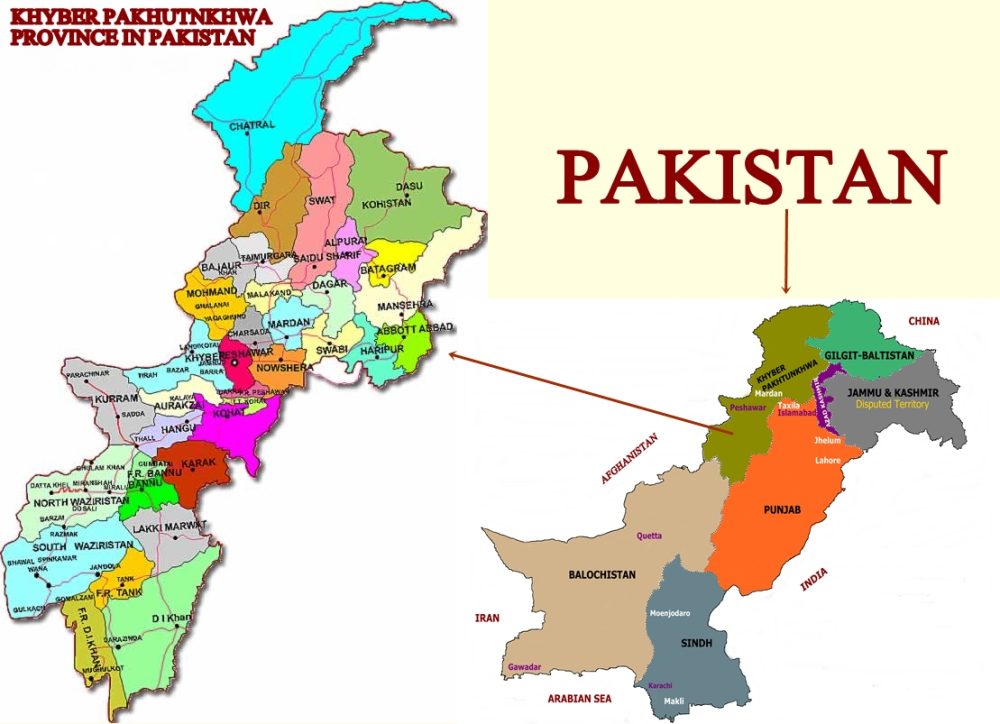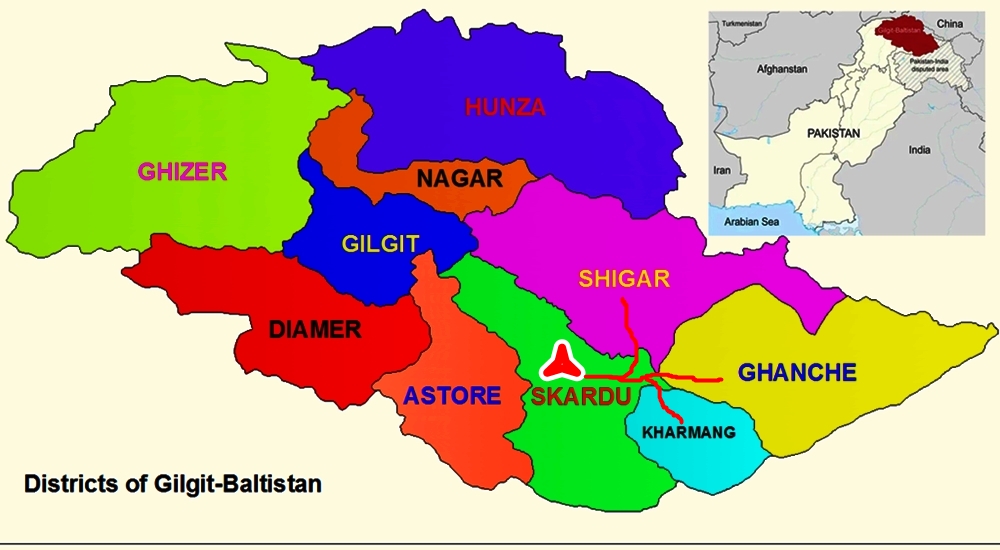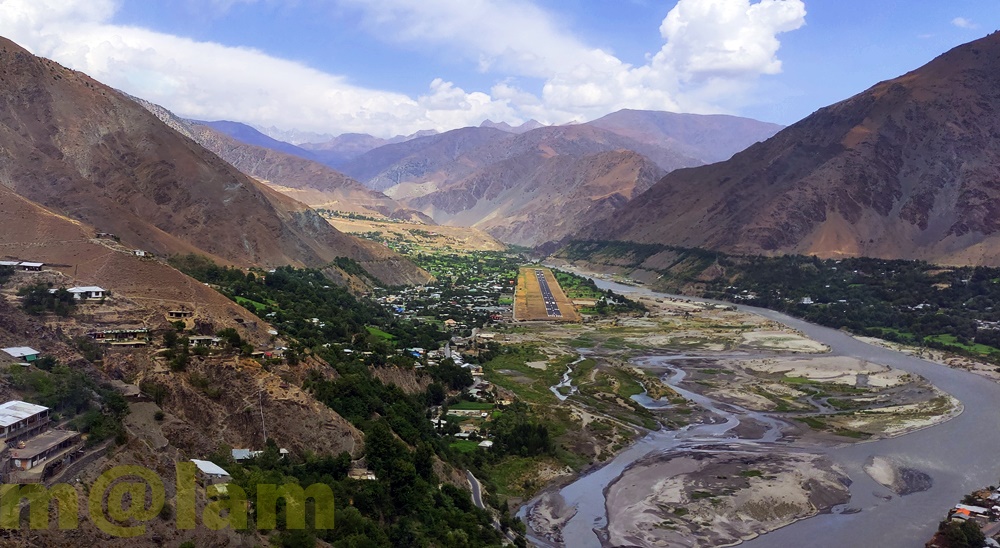Chitral is one of the spectacular, culturally rich, and prominent tourist destinations in the northern KPK province of Pakistan. The region is home to the mighty Hindukush Mountains and scenic valleys. The entire Chitral is blessed with breathtaking natural beauty. Each of its valleys has its unique attributes that distinguish it from the others. Its lush green valleys, high-altitude mountains, and scenic glaciers along with the rich culture of the region attract tourists from across the country and the globe every year. Chitral was historically an independent princely state before independence. However, it was the first state to declare accession to Pakistan as a district of Malakand Division in 1970.
Geography
Chitral town runs along the banks of the Chitral River. The entire Chitral district covers an area of 14,850 km². Out of its total landmass, 4% is forest, 3% cultivated area, and 2% cultivable land while the rest is mountains and barren. Chitral is bordered to the east by Gilgit-Baltistan, southeast with Swat, north and north-east by China and the Wakhan corridor of Afghanistan, west borders Nuristan and Kunar provinces of Afghanistan, and Upper Dir district of Khyber Pakhtunkhwa (KPK) province is situated to the south. Furthermore, Chitral town is the administrative center of the Chital district, which is controlled by the Khyber Pakhtunkhwa government.
Districts
Chitral itself is a district of KPK province housing a population of 447,362 and is further divided into two districts – lower and upper Chitral by the government of KPK. Chitral is located among the Hindukush Mountains in the northwest of Pakistan. Lower Chitral covers the region from Lowari to Barenis and Gabor on the Garam Chashma side while Upper Chitral starts from Barenis village onwards.
History
Centrally positioned on the crossroads to Central Asia, Chitral boasts a rich and captivating history. Its strategic location made it a coveted target for invaders, drawing attention before other areas in the region. The documented history of Chitral traces back to the early 8th century AD when Tibetans invaded the Yasin Valley, marking the beginning of a series of invasions. Subsequently, in 900 AD, both the Chinese and Buddhists became part of Chitral’s historical narrative. Later, the Kalash also ruled Chitral for decades.
In the 14th century, Chitral became a unified independent under the rule of Shah Nasir Rais while in 1570, the Rais dynasty was replaced by the Katoor dynasty. Likewise, the famous mehtar of Chitral Aman-ul-Mulk ruled from 1857 to 1892. In 1895, the siege of Chitral Fort took place and lasted a month, after which Chitral became an independent state under British rule. Finally, in 1969 it was merged into Pakistan. Today, Chitral hosts ancient Chitrali Tribes as well as nomads who were invited by the mehtars to settle in the state. Chitral is additionally the residence of the ancient pagan tribe, the Kalash, who currently reside exclusively in the three valleys of Bamburat, Rambur, and Birir.
Cultural Heritage
Chitral’s cultural heritage encompasses a rich tapestry of arts and crafts, traditional clothing, diverse cuisines, local games, music, dance, folksongs, and iconic landmarks.
People
The Chitrali people call the land of Chitral “Kho” or “Khow” who account for 92% of the population and their language is Khowar. Other tribes include the 3000 Pagan Kalash people living in Bamburet, Rambur, and Birir; the Shubgali tribe living in Gabor, Langoor Butt, and Bamburet and are believed to have come from Nooristan (Afghanistan). The tradition of hospitality is evident across northern Pakistan, but few places match the generous warmth found in Chitral.
Clothing
Chitral boasts a long and illustrious history that has profoundly shaped its culture. Men in the society typically don Shalwar and Kameez, complemented by the traditional Pakol headwear. Women, on the other hand, wear Khet Partog, traditionally covering their faces with a scarf and adorning their heads with a Dupatta. The Pakol is alternatively referred to as the Chitrali Topi. The region also hosts various festivals featuring Chitrali traditional music, folk tales, and captivating traditional dances performed by both male and female members.
Religious affiliation
Mainland Chitral and its valleys are home to the Muslim population. However, the majority of the people in Chitral’s Kalash Valley are polytheists who believe in numerous gods. They worship numerous gods and hold a variety of religious festivals.
Arts & Craft
Chitralis also have a strong taste for music and Chitrali sitar, a string instrument, can often be heard at many places and family gatherings. Chitral’s artisans manufacture a wide range of elegant and delicately crafted jewelry, woodwork and embroidery, woven and knitted textiles. The woolen fabric from Chitral, known locally as “Shu,” and walnut wood furniture are highly sought-after items in handicraft markets across the country. The traditional clothes, including those of the Kalash people, are made from wool and silk and decorated with beads and shells. Traditional caps (Khapol) and gowns (Chugha) are popular while the typical Chitrali shoes (Khon) resemble long-riding boots. Traditional Chitrali buildings are embellished with wood carvings and have been designed keeping in view the climatic and local environmental conditions of the area.
Culture
Chitral’s culture carries traces of Greek, Iranian, Tatar, and Turkish influences, attributed to its unique location and historical connections with Central Asia and Europe. Chitral’s own culture, which has evolved over millennia and includes more than a dozen ethnic groups communicating as many languages as there are cultures, is strongly tied to those of Central Asia rather than South Asia. Chitral and Kalash people are also known for their incredibly unusual clothing and dances, as well as their love for music (Especially the tribes of Kalash). During festivals, drums are played, and the women dance in a circle while some elderly folks sit on the sidelines and sing old melodies.
Languages
The predominant language spoken by the locals is Chitrali. Khowar is the most widely spoken language in the region, with 98% of the population speaking it, while Kalash people speak Kalasha. Urdu, the national language, is also spoken and understood by the locals while Pashtu is a provincial language understood and spoken in the main town of Chitral. Persian is spoken only in Madaglasht Valley while other languages spoken in Chitral include Gujari, Nuristani, Dameli, Wakhi, Kirghiz, Yidgha, Gawar-Bati, and Phalura.
Gastronomic delights
The area’s vast culinary range of foods and beverages is unique in terms of both flavor and presentation. Chitral’s traditional foods are a blend of Central Asian and Mughal influences. Chitral is a hilly and agricultural region, and dairy products appear in many of its traditional cuisines. Most of Chitral’s cuisines resemble that of Gilgit-Baltistan. Major cuisines include:
Soup Variations: Kalli, Leganu, and Lajhaik, Khhamalogh, and Kawirogh
Breads: Tikki, Khesta, Phulka, and Rishiki
Meat dishes: Rondijhzu, Taaw Kahak, and Taaw Machhi
Indigenous dishes: Ghalmandi, Qalaibat, Shroshrp, Pushur Tikki, Phhenak Tikki, Pandir Tikki, and Shaakh Mujhzi
Natural wonders
Chitral is renowned for its tranquility, picturesque surroundings, and diverse tourist attractions. Nestled in the stunning Hindukush Range, Chitral stands out as an undeniably romantic, intriguing, and charming destination. Situated in the hilly expanse of Pakistan’s far north, Chitral’s landscape captivates with its enigmatic allure—characterized by towering rocky mountains, lush green valleys, breathtaking meadows, and immense glaciers—earning it a reputation as one of the world’s most challenging and remote regions to explore.
Festivals
Polo holds the prestigious title of the most popular sport in Chitral, achieving a revered status. Polo matches are festive occasions that inevitably attract numerous tourists. The globally acclaimed Shandur Polo Tournament takes place annually between Gilgit and Chitral, spanning from the 7th to the 9th of July at Shandur Pass near Laspur Valley.
The Kalash people have a deep love for music and dancing, especially during their religious festivals. Notable occasions include Joshi Chilimjusht in spring (14th & 15th May), Phool from the 20th to the 25th of September, and Chowas held from the 18th to the 21st of December.
Economy
Like that of Gilgit-Baltistan, the economy of Chitral mostly depends on agriculture, mining, and tourism. There is no industrial infrastructure in the district and the majority of the population relies on the service sector for their sustenance and prefers to get government service instead of doing business or another way of livelihood. The non-existence of the industrial base in the district is also a reason which causes motivation of the people towards the service sector and preferably government service where incentive and salary package is attractive compared to the free market.
Climate
The Mediterranean climate is hot in the summer and frigid in the winter. Snowfall is common in Chitral’s Hindu Kush range. In the summer, the average temperature ranges from 22 to 30 degrees Celsius, while in the winter, the average temperature ranges from -5 to 12 degrees Celsius. Furthermore, the region’s average annual rainfall is 102mm. In the Hindu Kush range, where the glaciers are found, temperatures drop as low as -30 degrees Celsius.
The ideal time to visit
The optimal season for visiting Chitral is from April to September. Taking into account crucial factors like travel costs, weather conditions, peak travel seasons, and more, it is determined that January and February emerge as the most favorable months for a Chitral visit.
Adventures
Chitral, nestled in the breathtaking Hindu Kush mountain range, is a veritable paradise for nature and adventure enthusiasts. Located in northern Pakistan, this scenic region offers a wealth of stunning landscapes, cultural experiences, and thrilling outdoor activities. Whether you’re an avid hiker, a history enthusiast, or simply seeking to immerse yourself in untouched beauty, Chitral has something for everyone. For adventure seekers, Chitral offers diverse options such as trekking in the scenic Tirich Mir and Buni Zom peaks, whitewater rafting in the Chitral River, and wildlife spotting in the Chitral Gol National Park.
Another attraction in Chitral is the Kalash Valley, home to the unique Kalash people. The Kalash community has preserved their ancient traditions and customs for centuries. Visitors can explore their vibrant festivals, intricate handicrafts, and awe-inspiring architecture. Another must-visit site is the Shahi Mosque, an architectural gem that showcases the region’s rich Islamic heritage.
Communication
Chitral is one of KPK’s most distant districts, with a high literacy rate across the province. The importance of having access to the internet has long been recognized in the area. PTCL has just launched cable-based internet (broadband) technology. All the mobile networks work well in the valley. You will not face any difficulty with the mobile network. Jazz/Warid, Telenor, Zong, Scom, and every network provide you with a good network to stay connected with your loved ones.
Access
Via Peshawar (By Road)
Islamabad via Lowari Tunnel (8-10 hours).
Chitral is located at a distance of 365 kilometers from Peshawar and is accessible via the 13 km-long Lowari Tunnel. It is 405 kilometers from Islamabad and can be reached in around 9 hours.
Via Gilgit (By Road)
Islamabad – Gilgit (14-16 hours) & Gilgit – Chitral (10-12 hours).
To the north, it is connected with Gilgit city via Shandur Pass. The route via Shandur Pass is more scenic but is a seasonal passage. It remains closed in winter due to heavy snowfall. The renovation of this road is underway and has the potential to become the top choice of tourists once completed
From Islamabad and Peshawar (By Air)
PIA is operating two flights to Chitral every week – One from Islamabad and the other one from Peshawar.
All flights are subject to weather conditions
Frequently Asked Questions (FAQs)
Q: Is Chitral safe for tourists?
Chitral is generally considered safe for tourists. However, it’s advisable to stay updated on travel advisories and local guidelines.
Q: What is the best way to reach Chitral?
The most common way to reach Chitral is by air. The Chitral Airport connects the region to major cities in Pakistan.
Q: Are there accommodations for different budgets in Chitral?
Yes, Chitral offers a range of accommodations, from budget-friendly guesthouses to luxury resorts, catering to various preferences.
Q: Can I trek independently in Chitral, or is a guide necessary?
While some trails are suitable for independent trekkers, hiring a guide is recommended for safety and navigation in unfamiliar terrains.
Q: Are there restrictions for photography in the Kalash Valley?
Respect for the local community is essential, and it’s advisable to seek permission before capturing images, especially during festivals.
Q: What souvenirs can I buy in Chitral?
Chitral is known for its unique handicrafts, including intricate woodwork, handmade carpets, and traditional Kalash embroidery.
